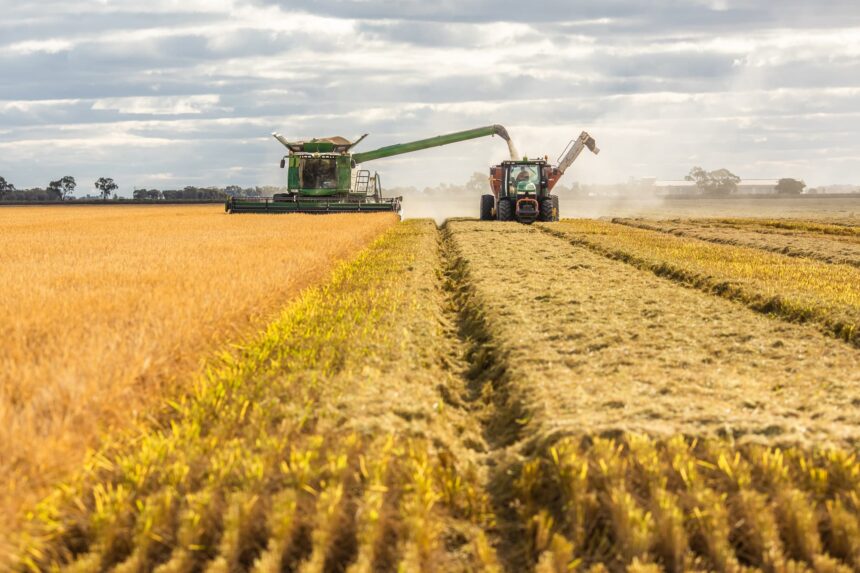Namibia is exploring strategic ways how to create stable, sustainable and self-reliant rice production value chains, which will help curb the country’s high import bill and bolster food security in the long run.
The country heavily relies on rice imports, as domestic production remains extremely low to negligible. Currently, rice cultivation takes place at Kalimbeza in the Zambezi region, at the University of Namibia’s (Unam) Ogongo Campus, and among small-scale farmers in the Omusati region.
However, locally grown rice has not yet gained widespread market recognition as initially expected, as rice production volumes from the Unam campus and Kalimbeza have over the past combined seven cropping seasons not been sufficient to cater for local demand.
At Unam Ogongo Campus, rice production displayed a steady upward trend, increasing from 10.5 tonnes in 2018/19 to a peak of 14.2 tonnes in the 2021/22 season, before experiencing a decline to 11.1 tonnes in the 2022/23 cropping season.
In contrast, Kalimbeza showed a significant rise in rice production from 67 tonnes in 2018/19 to 95 tonnes in 2020/21. These figures illustrate a consistent growth in production at both sites, with Kalimbeza achieving a notable increase within the two reported seasons.
According to the Namibian Agronomic Board (NAB)’s latest market intelligence report, Namibia’s annual rice import tonnage and value from 2019 marked a significant increase, with the import volume reaching its highest at 28,317 tonnes.
Correspondingly, the import value soared to N$314.1 million, reflecting both the increased volume and possibly higher market prices, thus highlighting a remarkable deviation from the preceding years.
Namibia imports most of its rice primarily from South Africa, China, and Thailand. The NAB report places strong emphasis on the country’s growing importation of rice to meet local demand and highlights that it offers a significant opportunity for local producers and traders to supply the domestic market.
“There is a pressing need to introduce large scale rice production in Namibia to address the increasing demand, targeting the Zambezi, Kavango, and North Central production zones, which have ample water resources.
Developing local rice production would create market opportunities for Namibian farmers and enhance the country’s self-sufficiency in grain production, thus reducing its dependency on rice imports. Both global and African rice consumption are on the rise, with global demand exceeding 520 million metric tons annually,” highlights the report.
This upward trend presents a chance for Namibian producers to expand rice cultivation and tap into regional and international markets and by doing so, producers would strengthen Namibia’s agricultural sector, improve food security, and contribute to the global rice supply chain, the NAB reasons.
Potential
Rice cultivation in Namibia has the potential to become a major source of income and job creation, particularly at the household level and across the country. Increased rice production could significantly benefit Namibian farmers and traders in the developing world, offering them more opportunities to grow their businesses.
To fully seize these opportunities, the report emphasises that it is essential to establish a comprehensive information and knowledge base on global, continental, and regional rice production and marketing trends.
This can provide valuable insights to Namibian stakeholders, thereby improving local rice production and marketing, and contributing to the country’s agricultural growth and food security.
Re-exports
On the flipside, Namibia’s domestic rice re-exports by country places Zambia as the leading recipient of Namibian re-exported rice, receiving 7.75 tonnes of rice valued at US$4.8 million. Smaller quantities were also re-exported to Angola, Norway, and the Democratic Republic of Congo (DRC).
Notably, South Africa received just 0.001 tonnes of rice during this period, while the latest data shows that Zambia continues to play a dominant role in Namibia’s rice re-export trade.
Although specific annual producer price data for rice in Namibia is limited, the rice retail price fluctuated significantly due to global market trends, import costs, and local demand. As of recent data in 2023, the retail prices for rice in Namibia ranged between N$56.09 and N$ 168.28 per kilogram, depending on location and variety.
High consumption
Namibia’s rice consumption primarily relies on imports. Despite the country’s relatively small population, rice consumption remains high, with only minimal local production emerging. Between 2018 and 2022, Namibia recorded an average annual rice consumption of 26,667 tonnes.
-ohembapu@nepc.com.na


